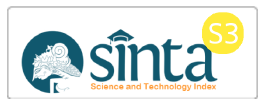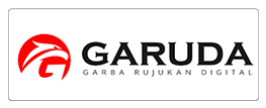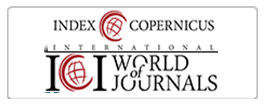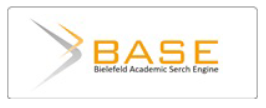Akuntabilitas Penetapan Sima Kerajaan Medang Masa Pemerintahan Dyah Balitung 898-910 M
DOI:
https://doi.org/10.22219/jaa.v7i2.32695Keywords:
Accountability, Historical Accounting, SimaAbstract
Purpose: This paper aims to explore accounting and accountability in sima policies during the Medang Kingdom era.
Methodology/approach: Accounting and accountability was viewed using Foucault's Power-Knowledge perspective
Findings: Accountability during the Medang Kingdom was rooted in eight practices in the lives of leaders known as Astabrata. Sima's policy as a reflection of Astabrata is closely related to the functions of accounting, accountability and control. Evidence shows that accounting power is manifested in many ways, including determining the size of the sima, business limits, determining pasek-pasek, the rights and obligations of sima leaders regarding reporting, and recording on inscriptions and palm leaves. This paper argues that accounting plays a role in legitimizing power through knowledge that develops in society through these eight life practices
Practical and Theoretical contribution/Originality: Accountability studies taken from the royal period are relatively rare, so that research can be carried out by using a knowledge of power perspective as a tool to reveal the accountability of sima policies
Research Limitation: The limitations of the research lie in the data source, namely the research inscription may not be able to provide a complete picture of accounting and accountability practices at that time
Downloads
References
Arnstein, R. S. (1971). Eight Rungs on the Ladder of Citizen Participation. In Citizen ParticipationL Effecting Community Change. Praeger Publishers.
Assagaf, N. A. S., Eko Ganis, & Baridwan, Z. (2020). Accounting Practices in the Golden Era of Sultan Babullah: The Sultanate of Ternate (1570-1583). Jurnal Dinamika Akuntansi dan Bisnis 7(2), 151-166. https://doi.org/https://doi.org/10.24815/jdab.v7i2.16761
Boechari. (2018). Kerajaan Mataram Sebagaimana Terbayang dari Data Prasasti In Melacak Sejarah Kuno Lewat Prasasti (3 ed., Vol. 3, pp. 183-195). Penerbit KPG.
Budiasih, I. G. A. N. (2014). Fenomena Akuntabilitas Perpajakan pada Jaman Bali Kunno: Suatu Studi Interpretif Jurnal Akuntansi Multiparadigma, 5(3), 409-420.
Budiasih, I. G. A. N., Erawati, N. M. A., & Suardikha, I. M. S. (2018). Praktik Akuntansi Betawian dalam Perspektif Kuasa dan Pengetahuan. Jurnal Akuntansi Multiparadigma, 9(1), 1-19. https://doi.org/http://dx.doi.org/10.18202/jamal.2018.04.9001
Budiasih, I. G. A. N., & Sukoharsono, E. G. (2012). Accounting Practices and the Use of Money in the Reign of King Udayana in Bali: An Ethnoarcheological Approach. The Indonesian Journal of Accounting Research, 15(3).
Carnegie, G. D., & Napier, C. J. (2012). Accounting's past, present and future: The Unifying Power of History. Accounting, Auditing & Accountability Journal, 25(2), 328-369. https://doi.org/https://doi.org/10.1108/09513571211198782
Ezzamel, M. (1997). Accounting, Control and Accountability: Preliminary Evidence from Ancient Egypt. Critical Perspectives on Accounting, 8(6), 563-601. https://doi.org/https://doi.org/10.1006/cpac.1997.0123
Ezzamel, M. (2005). Accounting For the Activities of Funerary Temples: The Interwining of the Sacred and the Profane Accounting and Business Research, 35(1), 29-51. https://doi.org/http://dx.doi.org/10.1080/00014788.2005.9729661
Fereday, J., & Muir-Cochrane, E. (2006). Demonstrating Rigor Using Thematic Analysis: A Hybrid Approach of Inductive and Deductive Coding and Theme Development. International Journal of Qualitative Methods, 5(1), 1-11.
Foucault, M. (1972). The Archeology of Knowledge and the Discourse on Language. Pantheon Books.
Grossi, G., Kallio, K. M., Sargiacomo, M., & Skoog, M. (2019). Accounting, Performance Management Systems and Accountability Changes in Knowledge-Intensive Public Organizations: A Literature Review and Research Agenda. Accounting, Auditing & Accountability Journal, 33(1), 256-280. https://doi.org/https://doi.org/10.1108/AAAJ-02-2019-3869
Hopwood, A. (1987). The Archeology of Accounting Systems. Accounting Organizations and Society, 12(3), 207-234.
Jayasinghe, K., & Soobaroyen, T. (2009). Religious "Spirit" and Peoples' Perceptions of Accountability in Hindu and Buddhist Religious Organizations. Accounting, Auditing & Accountability Journal, 22(7), 997-1028. https://doi.org/https://doi.org/10.1108/09513570910987358
Kuntowijoyo. (2003). Metodologi Sejarah (2 ed., Vol. 2). PT. Tiara Wacana Yogya
Lutfillah, N. Q. (2014). Akuntansi dalam Penetapan Sima Masa Jawa Kuno. Jurnal Akuntansi Multiparadigma, 5(1), 262-272. https://doi.org/https://doi.org/http://dx.doi.org/10.18202/jamal.2014.08.5018
Lutfillah, N. Q. (2021). Gayatri Akuntansi Majapahit. Penerbit Peneleh.
Lutfillah, N. Q., & Sukoharsono, E. G. (2008). Accounting in the Golden Age of Singosari Kingdom: A Foucauldian Perspective Simposium Nasional Akuntansi XI, Pontianak, Pontianak
Lutfillah, N. Q., & Sukoharsono, E. G. (2013). Historiografi Akuntansi Indonesia Masa Mataram Kuno (Abad VII-XI Masehi). Jurnal Akuntansi Multiparadigma, 4(1), 75-84.
Lutfillah, N. Q., Sukoharsono, E. G., Mulawarman, A. D., & Prihatiningtias, Y., W. (2016). Accounting and Finance Review Revealing the Accounting Existence Through Debt-Receivable Practice at Majapahit Kingdom Era (1350). Accounting and Finance Review, 1(1), 59-65.
Miller, P., & Napier, C. J. (1993). Genealogies of Calculation. Accounting, Organizations and Society, 18(7), 631-647.
Mudhoffir, A. M. (2013). Teori Kekuasaan Michel Foucault: Tantangan bagi Sosiologi Politik. Jurnal Sosiologi, 18(1), 75-100.
Mulawarman, A. D. (2010). Integrasi Paradigma Akuntansi: Refleksi atas Pendekatan Sosiologi dalam Ilmu Akuntansi. Jurnal Akuntansi Multiparadigma, 1(1), 155-171.
Peters, B. G. (2010). The Politics of Bureaucracy and Introduction to Comparative Public Administration (Vol. 6). Routledge.
Putra, C. G. B., & Muliati, N. K. (2020). Spirit Kearifan Lokal Bali dalam Akuntabilitas Desa Adat Jurnal Akuntansi Multiparadigma, 11(3), 561-580. https://doi.org/https://doi.org/10.21776/ub.jamal.2020.11.3.32
Rosyinadia, C. D., Sukoharsono, E. G., & Djamhuri, A. (2014). Accounting and Accountability Strategies of Gajah Mada’s Government: Analysis of Power-Knowledge. IOSR Journal of Economics and Finance, 5(6), 19-24.
Satrio, R., Sukoharsono, E. G., & Prihatiningtias, Y., W. (2018). The Construction of Internal Control System of Sima Village in Majapahit Empire Based on Jedong Inscription IX-X. Journal of Accounting and Business Education, 2(2), 290-309.
Sharon, S. S., & Paranoan, S. (2020). Refleksi Rumah Adat Ammatoa dalam Akuntabilitas Organisasi. Jurnal Akuntansi Multiparadigma, 11(1). https://doi.org/https://doi.org/10.21776/ub.jamal.2020.11.1.04
Soebadio, H., Sedyawati, E., Soesanti, N., & Astuti, R. (1997). Kajian Astabrata: Pendahuluan dan Teks CV. Putra Sejati Raya.
Suarbhawa, I. G. M. (2009). Mata Uang Pada Jaman Bali Kuna. In. Denpasar: Balai Arkeologi Denpasar
Sugiyono. (2018). Metode Penelitian Kuantitatif, Kualitatif, dan R&D. Penerbit Alfabeta.
Sukoharsono, E. G. (1995). A Power and Knowledge Analysis of Indonesian Accounting History: Social, Political, adn Economic Forces Shaping the Emergence and Development of Accounting University of Wollongong].
Yayla, H. (2011). Operating Regimes of the Government: Accounting and Accountability Changes in the Sultan Suleyman Waqf of the Ottoman Empire (The 1826 Experience). Accounting History, 16(1), 5-34.
Downloads
Published
Issue
Section
License
Copyright (c) 2024 Maharani Wuryantoro, Eko Ganis Sukoharsono, Aji Dedi Mulawarman

This work is licensed under a Creative Commons Attribution-NonCommercial-ShareAlike 4.0 International License.
Jurnal Akademi Akuntansi is licensed under a Creative Commons Attribution-NonCommercial-ShareAlike 4.0 International License.
Authors who publish with this journal agree to the following terms:
- Authors retain copyright and grant the journal right of first publication with the work simultaneously licensed under a Creative Commons Attribution-NonCommercial-ShareAlike 4.0 International License that allows others to share the work with an acknowledgment of the work's authorship and initial publication in this journal.
- Authors are able to enter into separate, additional contractual arrangements for the non-exclusive distribution of the journal's published version of the work (e.g., post it to an institutional repository or publish it in a book), with an acknowledgment of its initial publication in this journal.
- Authors are permitted and encouraged to post their work online (e.g., in institutional repositories or on their website) prior to and during the submission process, as it can lead to productive exchanges, as well as earlier and greater citation of published work (See The Effect of Open Access).
Jurnal Akademi Akuntansi dilisensikan di bawah lisensi Creative Commons Attribution-NonCommercial-ShareAlike 4.0 International.
Penulis yang menerbitkan artikel di jurnal ini menyetujui ketentuan berikut:
- Penulis mempertahankan hak cipta dan memberikan hak jurnal atas publikasi pertama dengan karya yang secara serentak dilisensikan di bawah Lisensi Pengaitan Creative Commons yang memungkinkan orang lain untuk berbagi karya dengan pengakuan atas karya penulis dan publikasi awal dalam jurnal ini.
- Penulis dapat masuk ke dalam pengaturan kontrak tambahan yang terpisah untuk distribusi non-eksklusif versi karya jurnal yang diterbitkan (misalnya, mempostingnya ke repositori institusional atau mempublikasikannya dalam sebuah buku), dengan pengakuan publikasi awalnya di jurnal ini.
- Penulis diizinkan dan didorong untuk memposting pekerjaan mereka secara online (misalnya, di repositori institusional atau di situs web mereka) sebelum dan selama proses pengajuan, karena dapat mengarah pada pertukaran produktif, serta kutipan pekerjaan sebelumnya dan yang lebih besar (Lihat Pengaruh Akses Terbuka).























